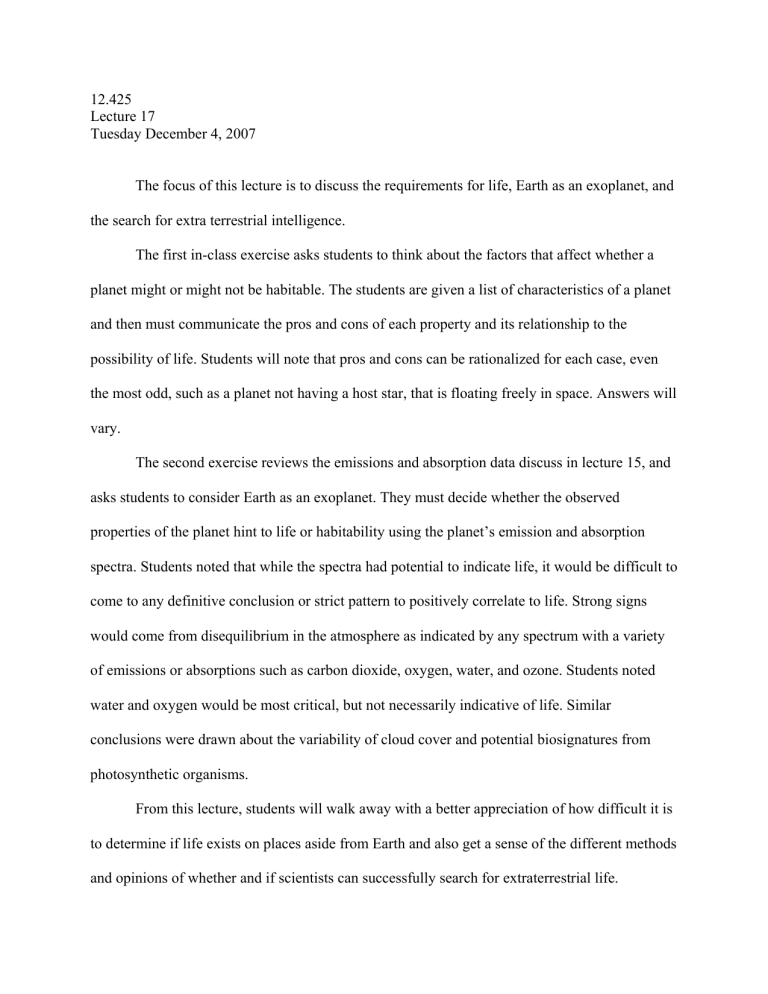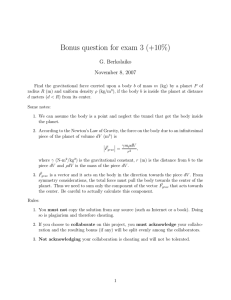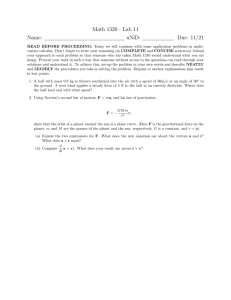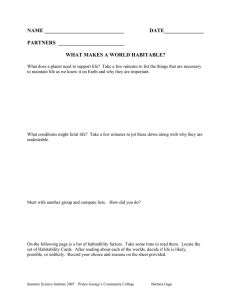12.425 Lecture 17 Tuesday December 4, 2007

12.425
Lecture 17
Tuesday December 4, 2007
The focus of this lecture is to discuss the requirements for life, Earth as an exoplanet, and the search for extra terrestrial intelligence.
The first in-class exercise asks students to think about the factors that affect whether a planet might or might not be habitable. The students are given a list of characteristics of a planet and then must communicate the pros and cons of each property and its relationship to the possibility of life. Students will note that pros and cons can be rationalized for each case, even the most odd, such as a planet not having a host star, that is floating freely in space. Answers will vary.
The second exercise reviews the emissions and absorption data discuss in lecture 15, and asks students to consider Earth as an exoplanet. They must decide whether the observed properties of the planet hint to life or habitability using the planet’s emission and absorption spectra. Students noted that while the spectra had potential to indicate life, it would be difficult to come to any definitive conclusion or strict pattern to positively correlate to life. Strong signs would come from disequilibrium in the atmosphere as indicated by any spectrum with a variety of emissions or absorptions such as carbon dioxide, oxygen, water, and ozone. Students noted water and oxygen would be most critical, but not necessarily indicative of life. Similar conclusions were drawn about the variability of cloud cover and potential biosignatures from photosynthetic organisms.
From this lecture, students will walk away with a better appreciation of how difficult it is to determine if life exists on places aside from Earth and also get a sense of the different methods and opinions of whether and if scientists can successfully search for extraterrestrial life.









